This step by step woodworking project is about how to build a 16×14 gable pavilion plans. Welcome to this outdoor project! With a budget of around $1500 and about a weekend’s worth of work, you can build a stylish and sturdy addition to your backyard. This pavilion is perfect for hosting outdoor gatherings, creating a cozy lounging area, or even setting up an outdoor workspace. This structure is heavy duty, but please follow the building codes and make modifications, if necessary. See all my the gazebo plans HERE.
We recommend you to invest in the best materials you could afford. Therefore, you should buy weather-resistant lumber, such as pressure-treated lumber, cedar or redwood. If you use regular pine, I recommend you to apply the appropriate products to enhance its durability. Always take accurate measurements before adjusting the size of the components at the proper size. Drill pilot holes trough the components before inserting the wood screws, to prevent the wood from splitting. See all my Premium Plans HERE.
Made from this plan
16×14 Gable Gazebo – DIY Plans
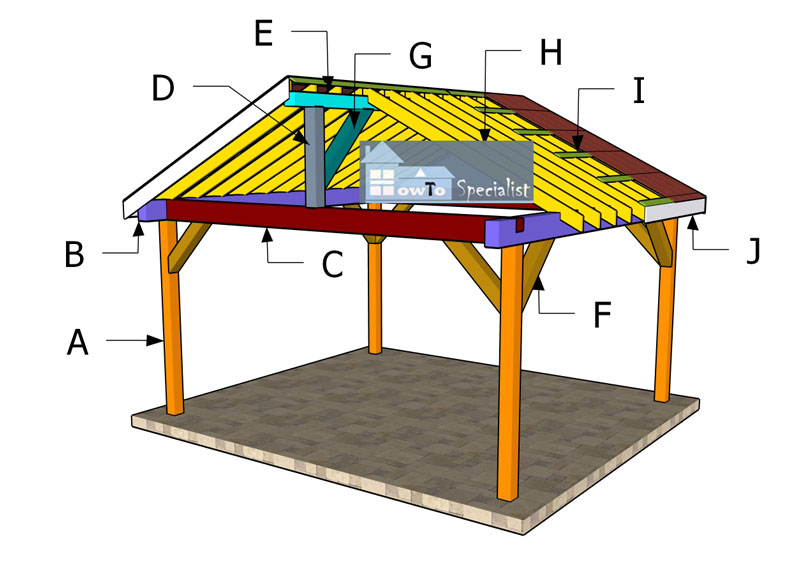
Building-a-16×14-gable-pavilion
Materials
A – Posts – 6×6 lumber 8 ft – 4 pieces
B – Side plate – 6×10 lumber 16 ft – 2 pieces
C – Side plate – 6×10 lumber 16 ft – 2 pieces
C – Top plates – 6×8 lumber 8 ft – 2 pieces
D – Supports – 6×6 lumber 41 1/4″ – 2 pieces
E – Ridge Beam – 6×6 lumber 16 ft – 1 piece
F – Braces – 6×6 lumber 36″ – 8 pieces
G – Braces – 6×6 lumber 48″ – 2 pieces
H – Rafters – 2×6 lumber 120″ – 26 pieces
I – Purlins – 1×4 lumber 112″ – 6 pieces
I – Purlins – 1×4 lumber 80″ – 6 pieces
H – Trims – 1×8 lumber 121 3/4″ – 4 pieces
H – Trims – 1×8 lumber 112″ – 2 pieces
H – Trims – 1×8 lumber 80″ – 2 pieces
*Buy Premium Plans for Cut and Shopping Lists
Tools
- Safety gloves, glasses
- Miter saw, jigsaw
- Chalk line, tape measure, spirit level, carpentry pencil
- Drill machinery and drill bits
Time
- One Week
How to build a 16×14 pavilion – PDF Download
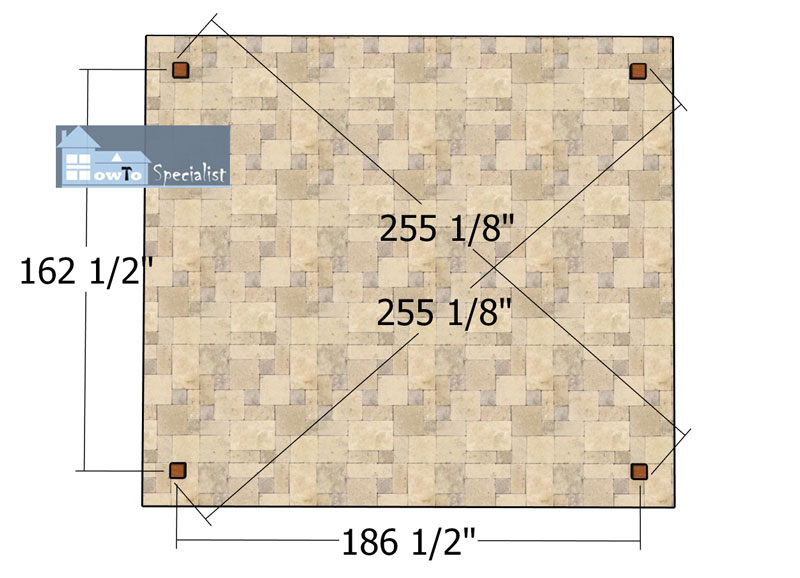
Laying-out-the-posts
Alright folks, for this 16×14 gable pavilion, we’re gonna need some pressure-treated lumber, concrete for the footings, and all the hardware—screws, bolts, you name it. Make sure you’ve got everything ready before you start; it’ll make the build a lot smoother and more fun. Once we’ve got our supplies lined up, we can dive right into setting the posts. Let’s get to it!
Alright, let’s simplify it. First, dig your footings about 3 feet deep, set the tube forms, and pour the concrete, making sure to eliminate any air pockets. While the concrete is still wet, install the post anchors and let it cure for 24-48 hours. Finally, attach the posts to the anchors, ensuring they are plumb and level before securing them.

Setting the posts
After installing the posts you need to check the tops are aligned one with another. Use a laser level / water level to mark the horizontal line to the top of the posts. Use a circular saw to make the cuts if necessarily. In addition, you can adjust the height of the posts to suit your needs. Therefore, you can cut 1 ft from the 8 ft posts without any consequences; it is just a matter of taste if you want to have the clearance shorter.

Making-the-top-plates
We’re using 6×10 lumber for the top plates because it gives our pavilion serious strength and stability. This size can handle the roof’s weight and any extra loads like snow or wind. Plus, the wider surface makes it easier to attach the rafters securely, making the whole build tougher. It might take a bit more work upfront, but it’s totally worth it for durability and safety.
For the top plates, we’re doing half-lap joints for a strong connection. Measure and mark where the plates intersect, cut halfway through the lumber at those marks, and clean out the wood between with a chisel to make a flat notch. Do the same on the intersecting plate so they fit together snugly. Slap on some wood glue, fit the joints, and secure them with clamps and a few screws or bolts. This way, we get a rock-solid, stable connection for the top plates.

Fitting-the-top-plates
Alright, let’s get those top plates up. Lift them onto the posts and align with the edges. Drill pilot holes through the top plates into the posts, then lock them down with 10″ heavy-duty screws. For extra stability, slap on some metal post-to-beam connectors at each intersection. Finally, make sure everything is level and square before tightening all the fasteners completely. Let’s get it done!
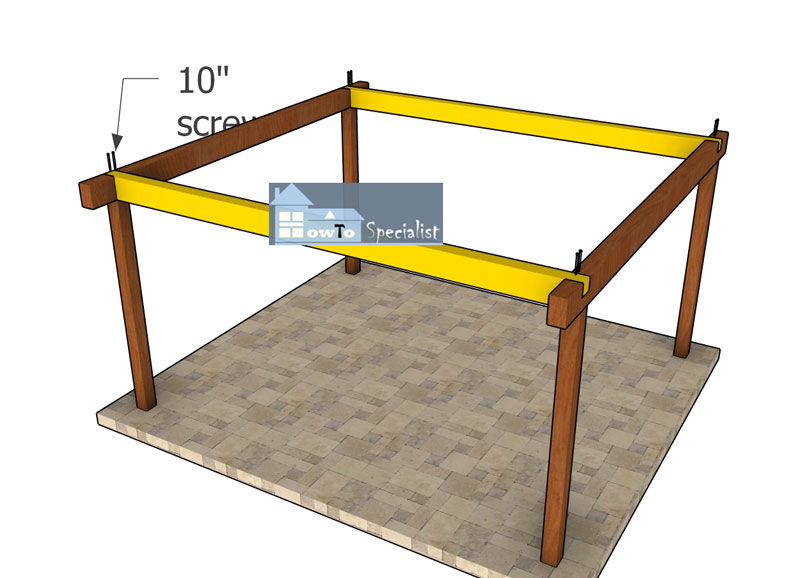
Installing-the-crossbeams
Fit the side top beams onto the pavilion. Drill pilot holes and drive in those 8″ screws to tighten everything up. Use a spirit level to make sure the plates are perfectly horizontal. And don’t forget to check the corners with a carpentry square to ensure they’re right-angled. Let’s keep it tight and precise!
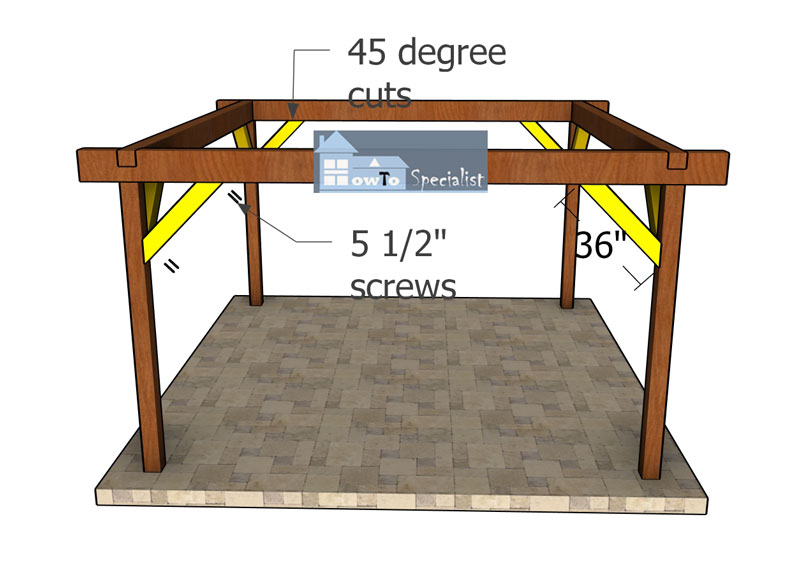
Attaching-the-braces
Adding diagonal braces is key for stability. Cut those braces to length with 45-degree angles on the ends. Fit them snugly between the posts and top plates. Secure them with heavy-duty 5 1/2″ screws, making sure they’re tight and stable. This will reinforce the structure and keep it from wobbling.
How to Build a Lean to Pavilion Roof
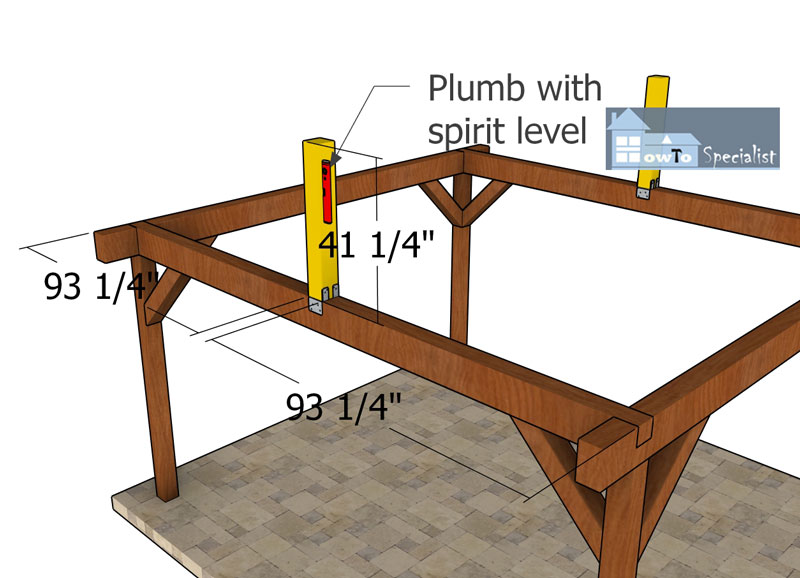
Fitting-the-ridge-beam-supports
Grab some 6×6 lumber for the ridge beam supports. Center those supports on the crossbeams and secure them with post-to-beam connectors and 2 1/2″ structural screws. Use a spirit level to make sure the posts are plumb before setting the supports in place.
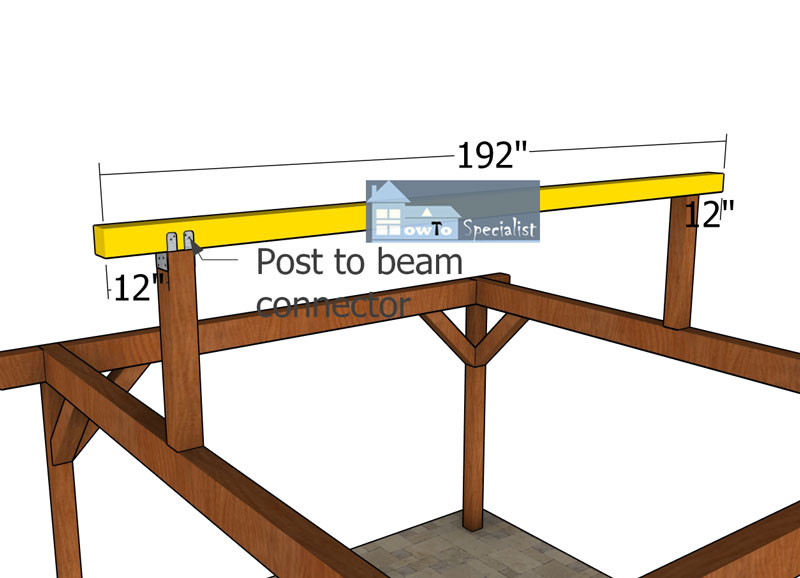
Fitting-the-ridge-beam
Use 6×6 lumber and remember those 12″ overhangs at the front and back. Place the ridge beam onto the supports, making sure the corners are square. Secure it tightly with post-to-beam connectors and 2 1/2″ structural screws.
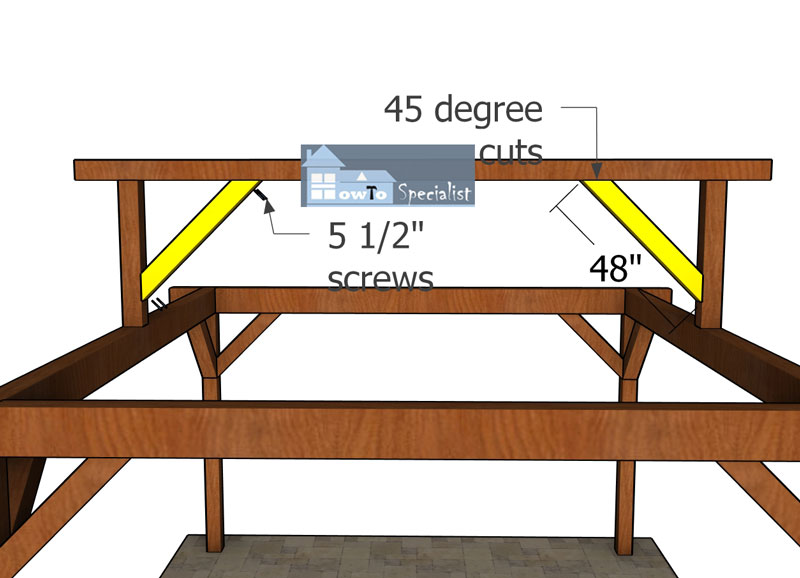
Top-braces
Fit the diagonal braces to the ridge beam. Plumb the posts, drill pilot holes through the braces and insert 5 1/2″ screws into the supports and ridge beams. Use 2 screws for each joint.
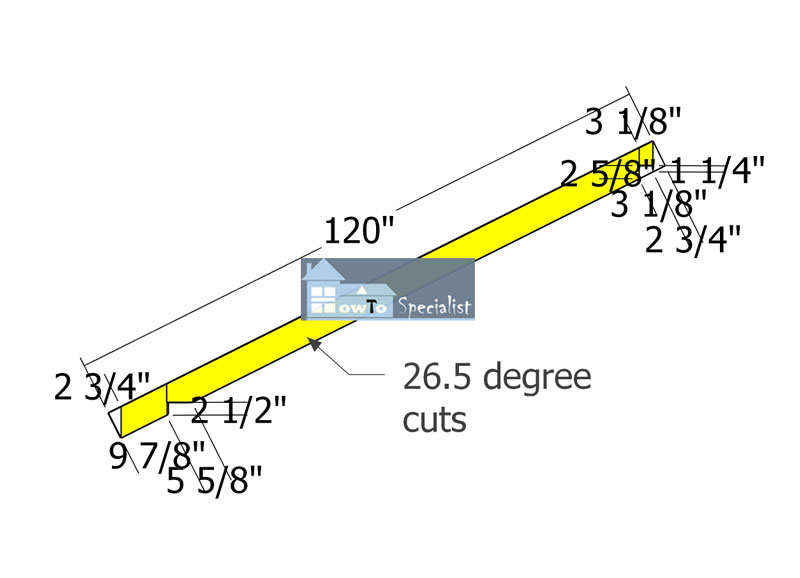
Rafters—cut-detail
Alright, let’s get those rafters sorted. Grab some 2×6 lumber for the rafters of the pavilion. Measure the length needed for each rafter, taking the roof pitch into account, and mark your cuts on the lumber. Use a circular saw to cut the birdsmouth notches. Test the first rafter to make sure it fits perfectly before cutting the rest. Once you’re happy with it, use that first rafter as a template to mark and cut the remaining ones for consistency. Let’s get these rafters ready to roll!
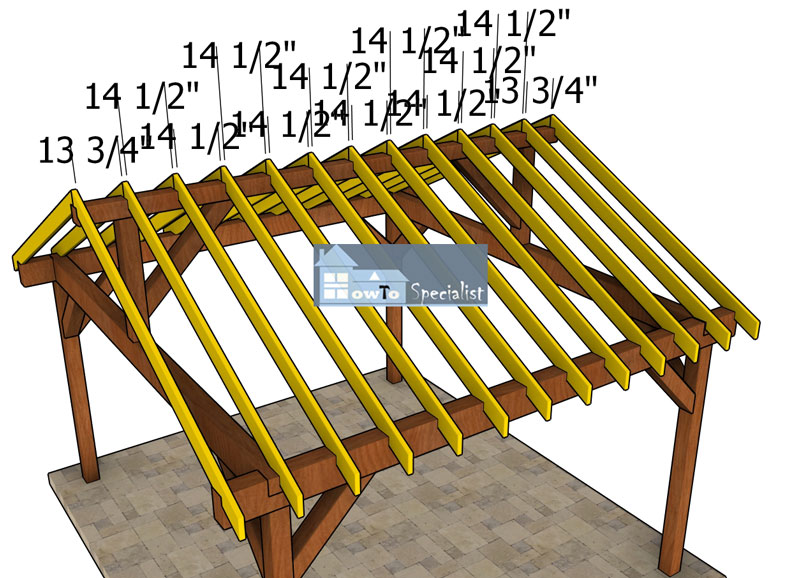
Fitting-the-rafters
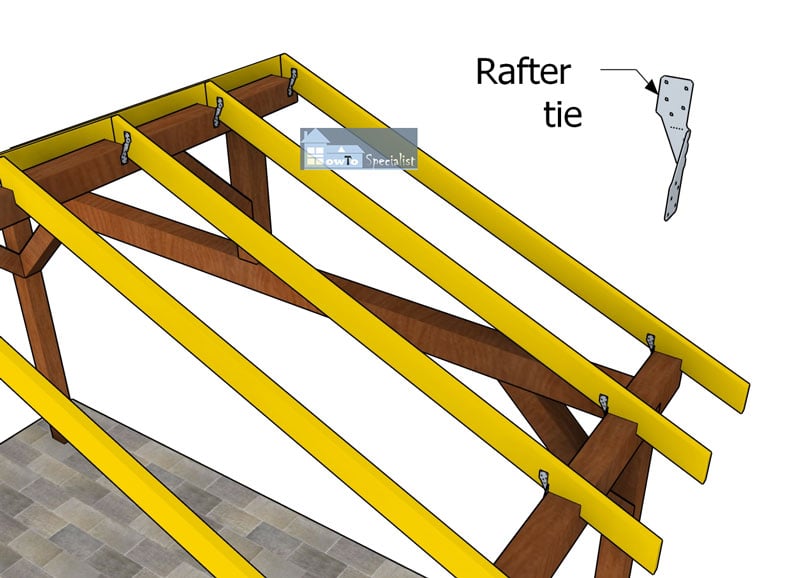
Fitting-the-rafters—16×14-pavilion
Next, let’s position those rafters on the top plates. Make sure they’re evenly spaced at 24″ on center and perfectly aligned. Next, secure metal rafter ties to the top plates, lining them up with the rafters. Use 1 1/2″ structural screws to attach the ties to the rafters, ensuring a tight connection. Finally, double-check that all rafters are properly aligned and securely fastened for a stable and sturdy structure. Let’s make this build rock solid!
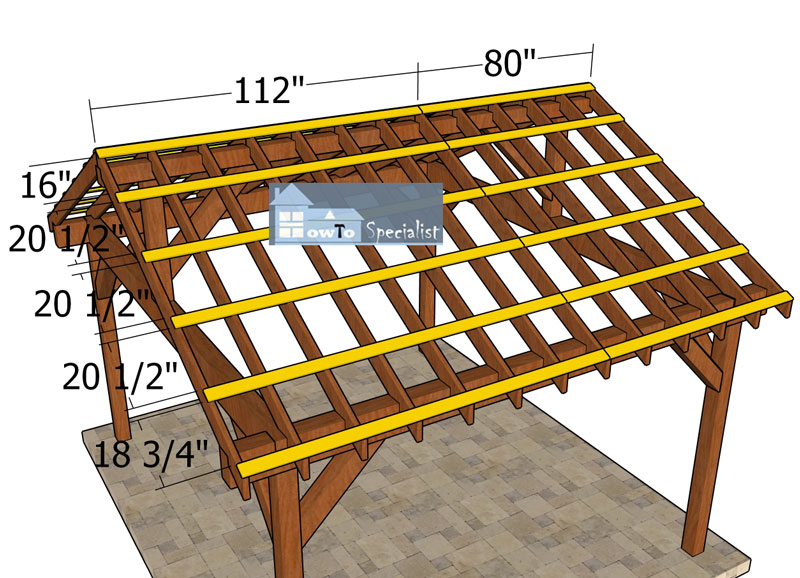
Fitting-the-purlins
We’re going to use 1×4 purlins for the roof structure. Position the purlins every 24″ on center and secure them to the rafters with 2 1/2″ screws. Make sure to align the edges at both ends before inserting the screws. This will ensure everything is straight and solid.
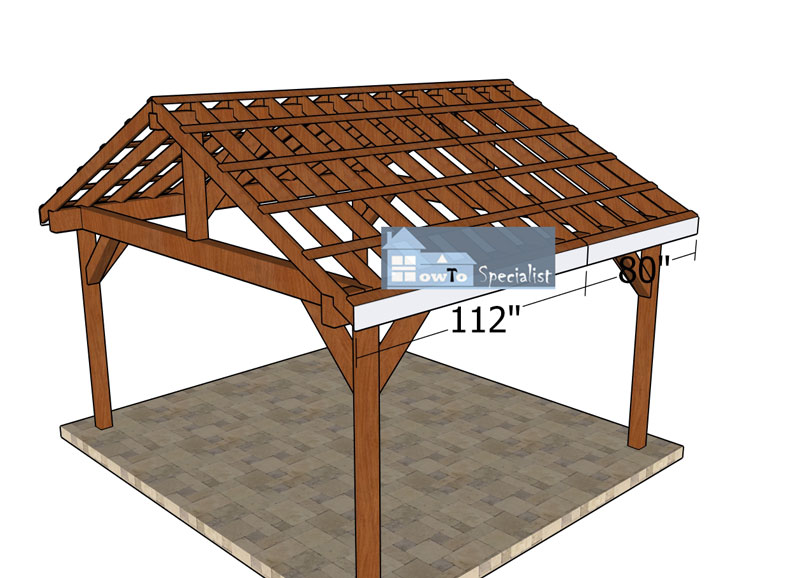
Side-roof-trims
Fit the 1×8 trims to the sides of the pavilion. Align the edges flush and insert 6d nails to lock them to the rafters.
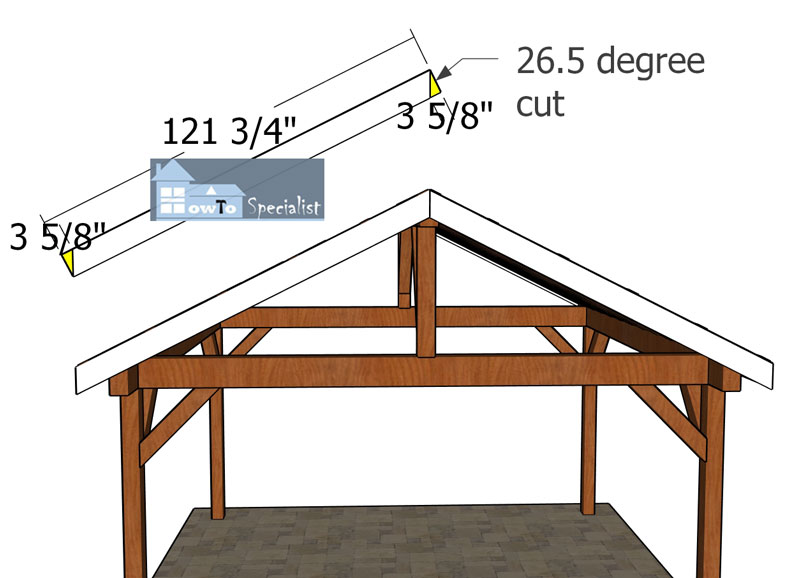
Gable-end-trims
Use 1×8 lumber for the front and back roof trims. Make 26.5 degree cuts to both ends of the trims. Attach the trims to the rafters and insert 2″ / 6d nails to lock them into place tightly.

Fitting-the-roofing
Start by installing the metal roofing panels at one end of the pavilion, aligning the first panel with the edge of the roof and securing it with screws through the pre-drilled holes. Overlap the next panel by one ridge and fasten it in the same manner, continuing this process across the roof.
At the ridge, place a ridge cap over the meeting point of the two roof sides, securing it with screws to ensure a watertight seal. Finish by attaching metal trim along the edges and eaves to provide a clean look and extra protection against the elements.
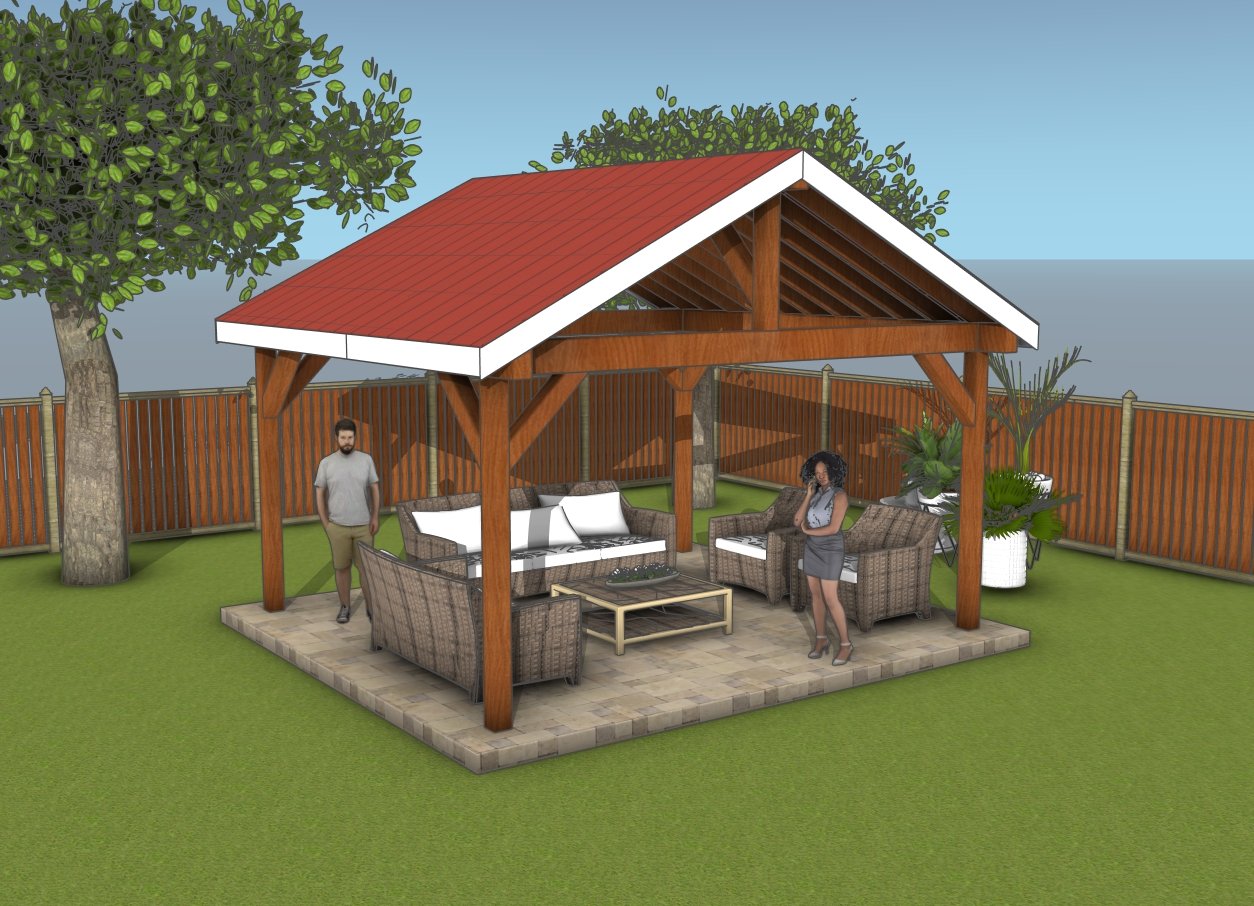
16×14 gable pavilion plans
To wrap up this wooden pavilion, start by sanding all the surfaces to smooth out any rough spots. Next, apply a weather-resistant stain or paint to protect the wood from the elements and give it a nice finish. Once the stain or paint is dry, add any final touches you have in mind. Finally, do a thorough inspection of the entire structure to make sure everything is secure and looking great.
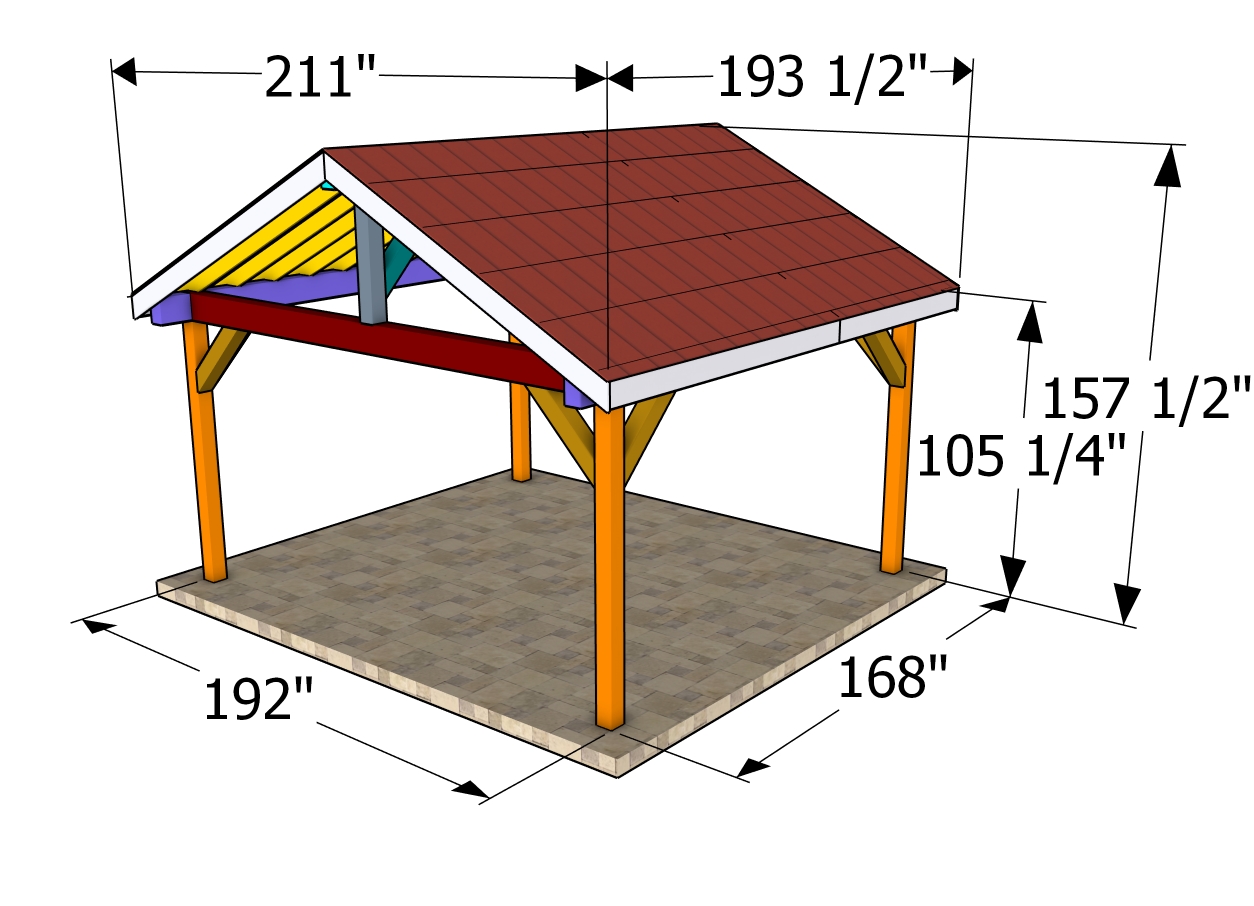
16×14 Pavilion Plans
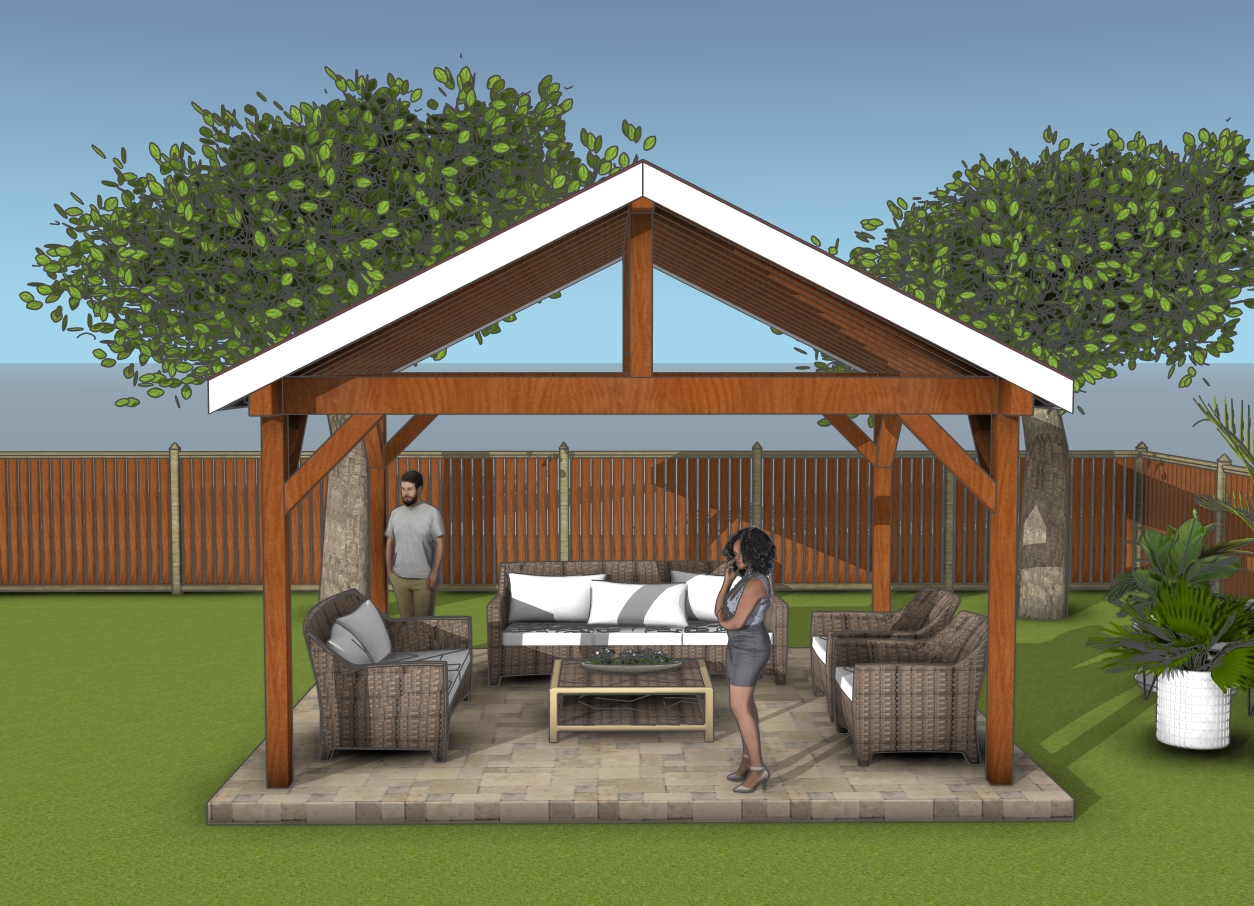
Front view – 16×14 gable pavilion
This 16×14 four-post pavilion with a gable roof is all set! With everything sanded, stained, and secured, it’s ready to handle whatever the elements throw at it. This pavilion is perfect for outdoor dining, a cozy lounging area, or even a workspace for your projects. You can hang string lights, set up some comfy furniture, and enjoy your backyard in style.
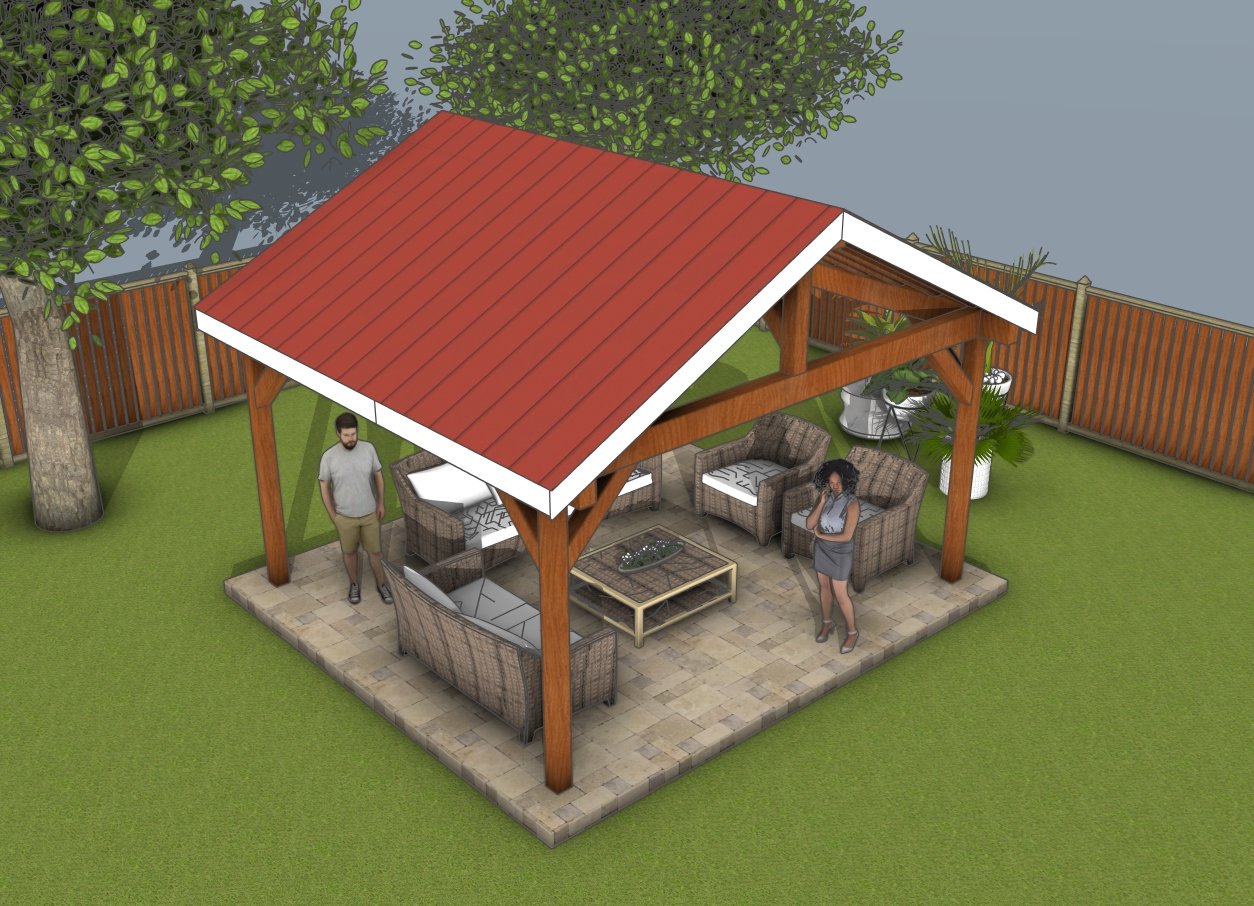
Top view – 16×14 gable pavilion
This pavilion project, with its detailed steps, creates a functional and attractive addition to any backyard or garden. It’s perfect for outdoor dining, relaxing, or even as a workspace. Follow along, and you’ll have a great-looking pavilion that enhances your outdoor space.
Thanks for checking out my 16×14 gable pavilion plans! Make sure to browse through my other projects for more awesome ideas. Don’t forget to hit that LIKE button and SHARE with your friends using the social media links below.

